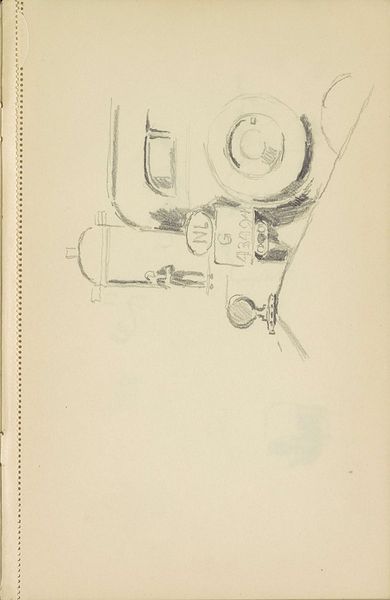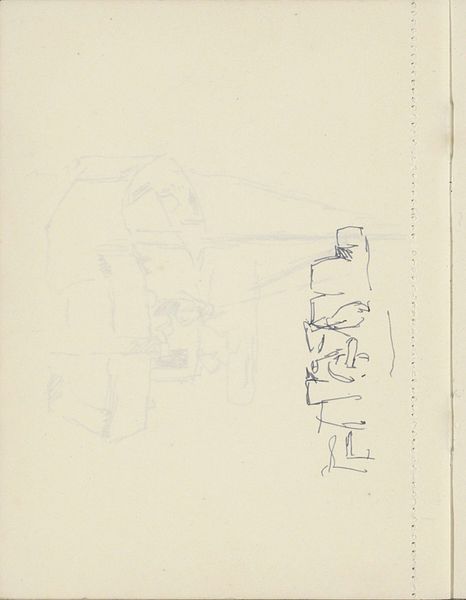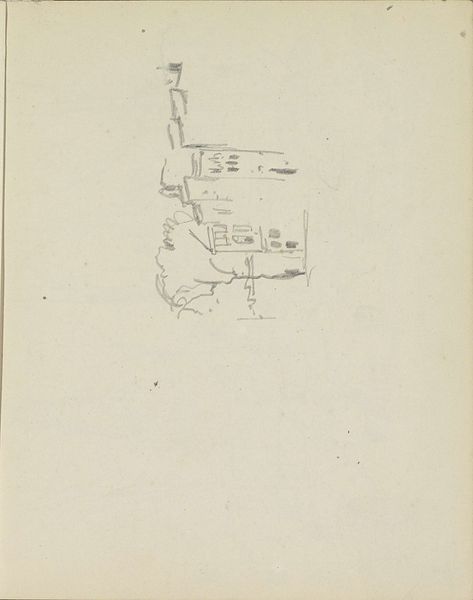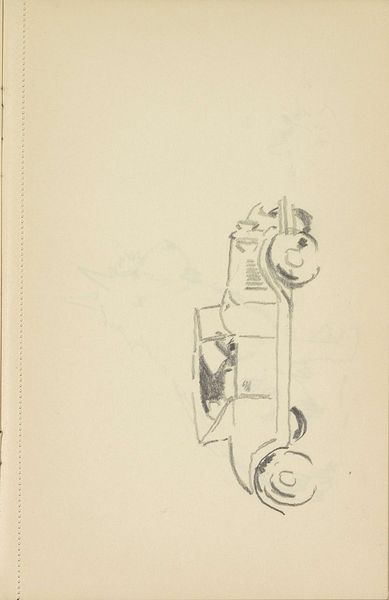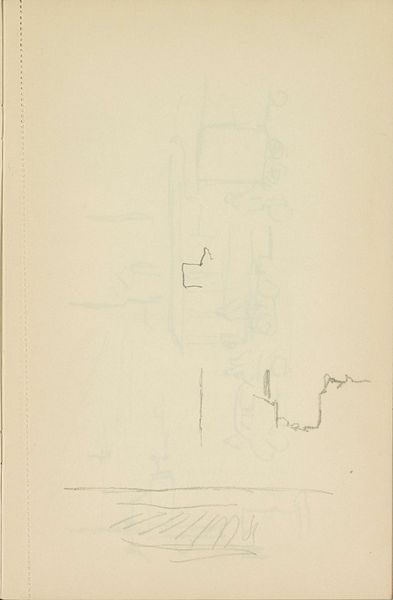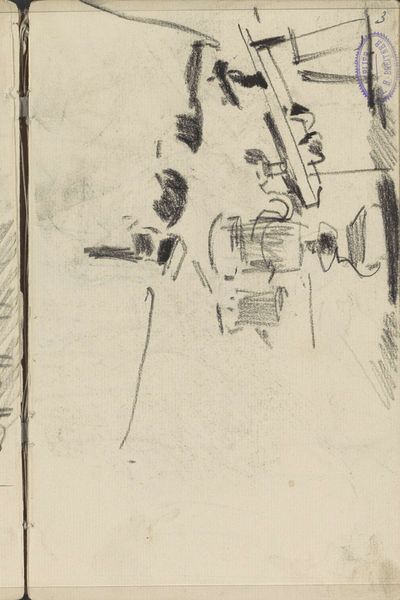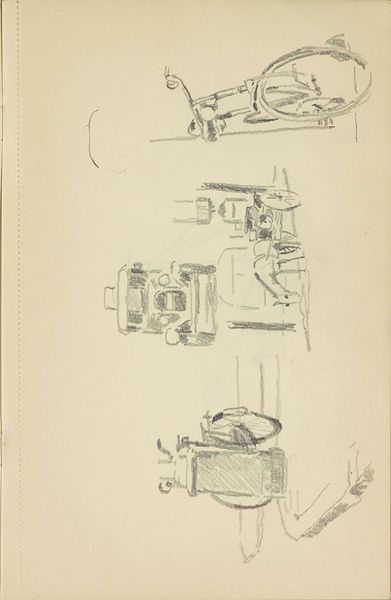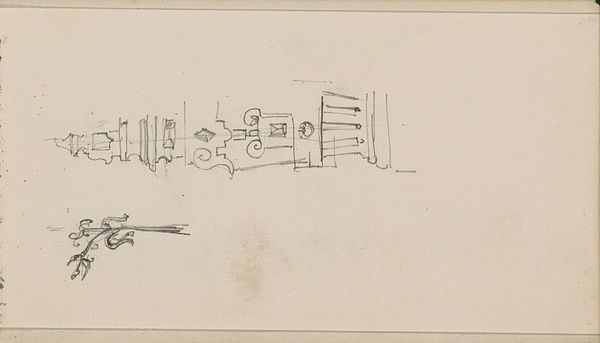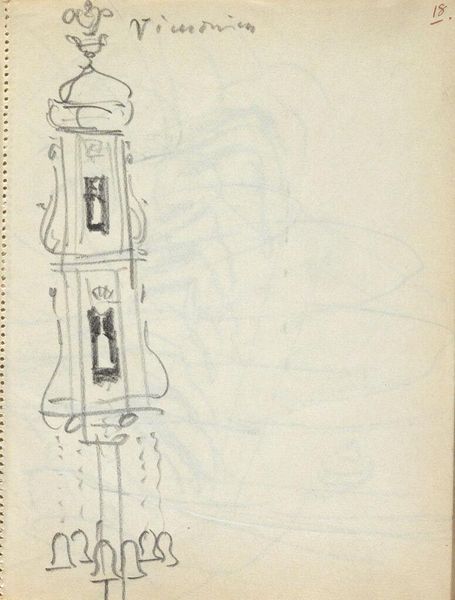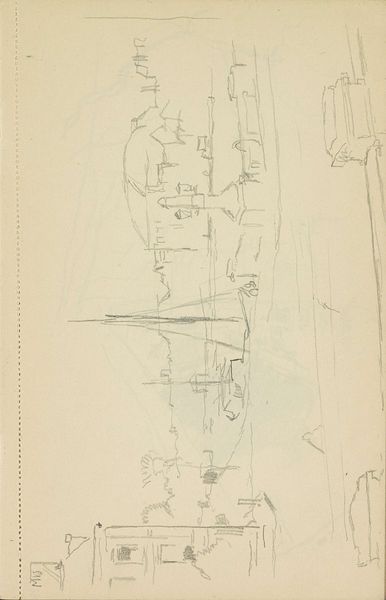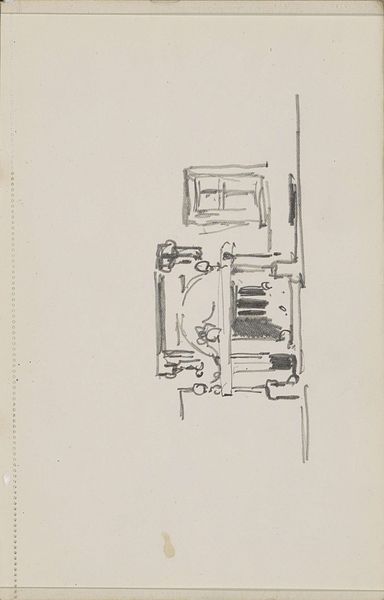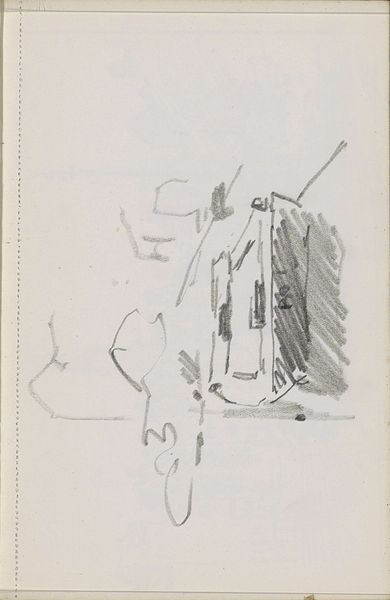
drawing, paper, pencil
#
drawing
#
paper
#
geometric
#
sketch
#
pencil
Copyright: Rijks Museum: Open Domain
Curator: Here at the Rijksmuseum, we have a pencil drawing on paper by Cornelis Vreedenburgh, simply titled "Auto," created sometime between 1890 and 1946. Editor: Well, my first impression is that this is just that: an auto. Its skeletal form almost gives it the appearance of something unearthed. Curator: Exactly, it reflects a fascination with the budding machine age, but also anxieties about its impact on Dutch society, the fear of overtaking traditional values perhaps? This automobile almost becomes an artifact on display in itself, representing this complex negotiation with modernity. Editor: I see it also from a structural point of view. The minimal lines, mostly geometric, show us just enough of a framework that, if completed, could reflect a much bigger machine. It’s almost a Platonic ideal of a car. Curator: It makes me think about accessibility too. Automobiles at that time certainly signified privilege, a huge marker of social status and wealth. And here is Vreedenburgh documenting this transformation in Dutch culture. This almost dreamlike quality that captures our imagination shows it wasn't everyday life, yet. Editor: I agree with the elusive nature, even from just an artist's practice point of view, that's quite intriguing. He barely puts the pencil to paper, so sparse is it. However, this deliberate withholding adds an alluring quality. Curator: Indeed, there’s a subtle commentary on social values woven into those incomplete lines. Editor: It seems that Vreedenburgh used it as an invitation for us, as viewers, to complete its image with our expectations, reflections, fears or dreams, in this era of new possibilities. Curator: Yes, looking closer it is indeed much more than a simple sketch on paper, but actually, reveals a nation in transit.
Comments
No comments
Be the first to comment and join the conversation on the ultimate creative platform.
